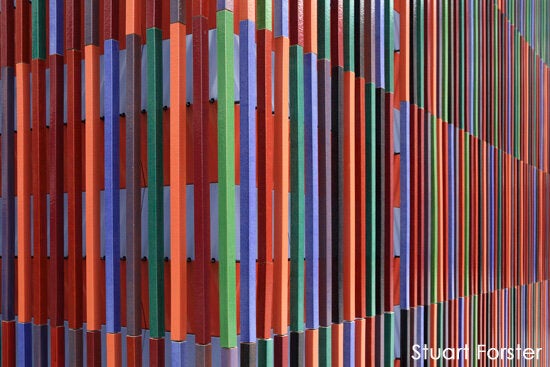The Brandhorst Museum is a relatively recent addition to the Kunstareal (meaning 'art area'), which is home to a concentration of galleries and museums in central Munich.
The museum opened its doors in 2009 and its colourful exterior will catch your eye if you're travelling along Tuerkenstrasse and Theresienstrasse, on whose corner it stands.
As you might guess from the stylish facade and location close to the Pinakothek der Moderne, this building is the home to a contemporary and modern art collection.
The museum is named after Udo and Anette Brandhorst, whose art collection now numbers more than 700 works; most dating from the second half of the last century though several have been created and acquired since the turn of the millennium.
Paintings, sculptures and installations by influential artists such as Joseph Beuys, Damien Hirst, Alex Katz, Jean-Michael Basquiat and Bruce Nauman count among the 200 or so works on display within this purpose built museum.
The design of the Brandhost Museum, by the Berlin based architects Sauerbruch Hutton, is aesthetically impressive and technologically innovative. Ceramic rods, glazed in 23 colours are used on the facade. The visual impact of the 36,000 rods changes according to your position in relation to the museum. Interestingly, the colours appear most intense in the immediate vicinity of the gallery. Consequently, taking a few minutes to walk around the exterior is worthwhile and also provides an opportunity to view the museum's ribbon glazing that provides natural light.

Even if your primary interest is contemporary architecture rather art, the interior of this museum warrants a visit. The galleries within the two storey building have a minimalist feel; the intention was surely that the works on display have plenty of natural light and room without distractions. It's difficult not to admire the space itself.
The white walls of the upper floor provide a nine metre vertical in which works can be hung. The polygonal room in which Cy Twombly's Lepanto is displayed provides an opportunity to gain a panoramic view of the 12 paintings representing the sea battle of 1571, one of the most significant in European history. Lepanto was painted for the Venice Biennale of 2001.
The flow between rooms is easy, exuding a positive energy. The aesthetics of the staircase are also impressive. Interestingly, the walls and floors hold thermo-active elements and help regulate the temperature within the museum.
The environmental aspects of the design help in minimising the Brandhorst Museum's energy use and carbon footprint, saving an estimated 390 tonnes of carbon dioxide emissions per year. The positive feel within the museum may well be due the fact the air is filtered and the ceilings designed to maximise on natural light, without permitting direct sunlight into the galleries.
The basement houses a number of works by Andy Warhol as well as Damien Hirst's In This Terrible Moment and Waste. The media suite provides an interactive opportunity to gain insights into the museum and works that have been displayed here.
It is worth setting aside at least a couple of hours to get the most out of this museum.
Further Information
For more information on attractions in Munich, take a look at the city's tourist information website.